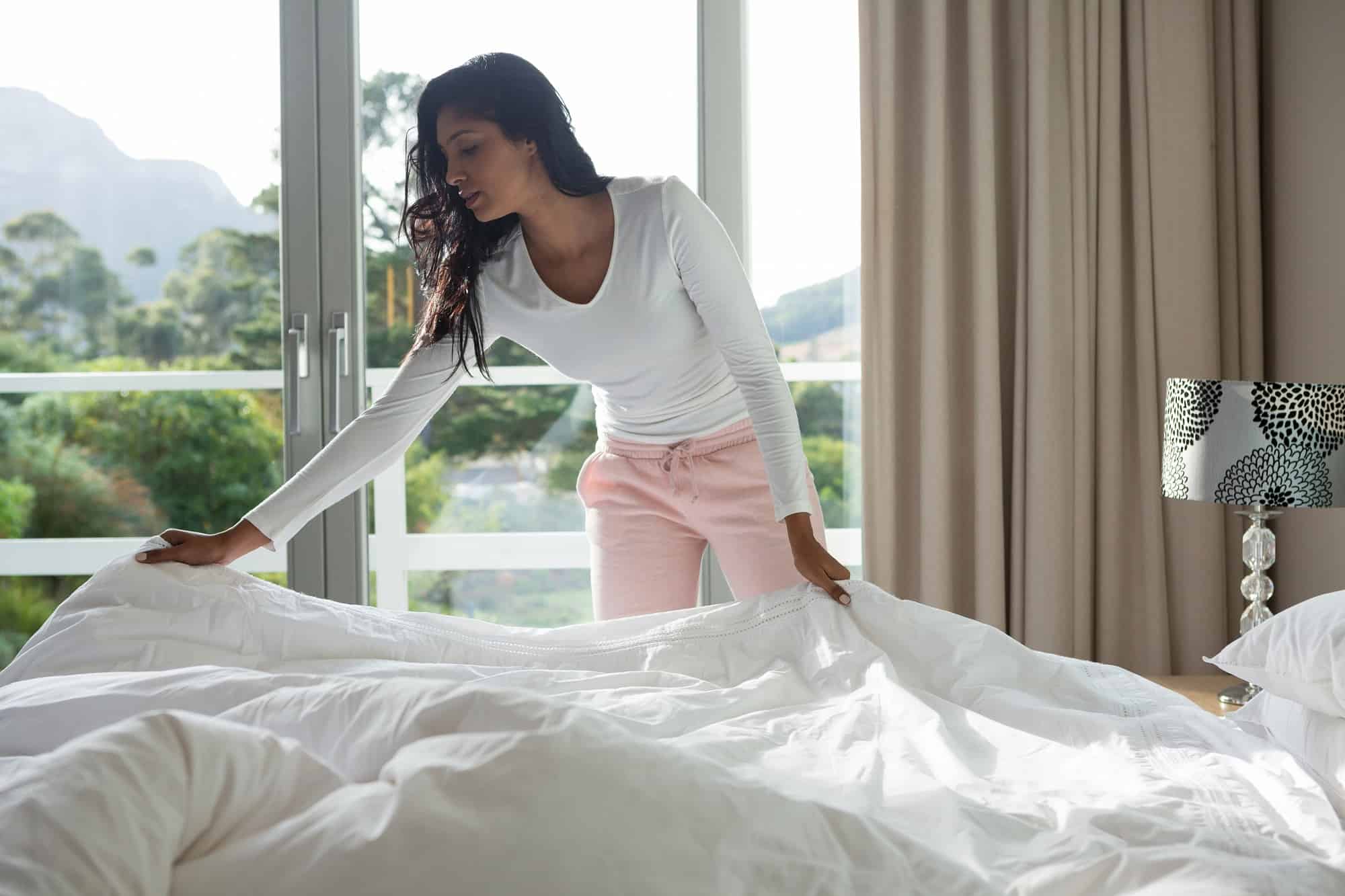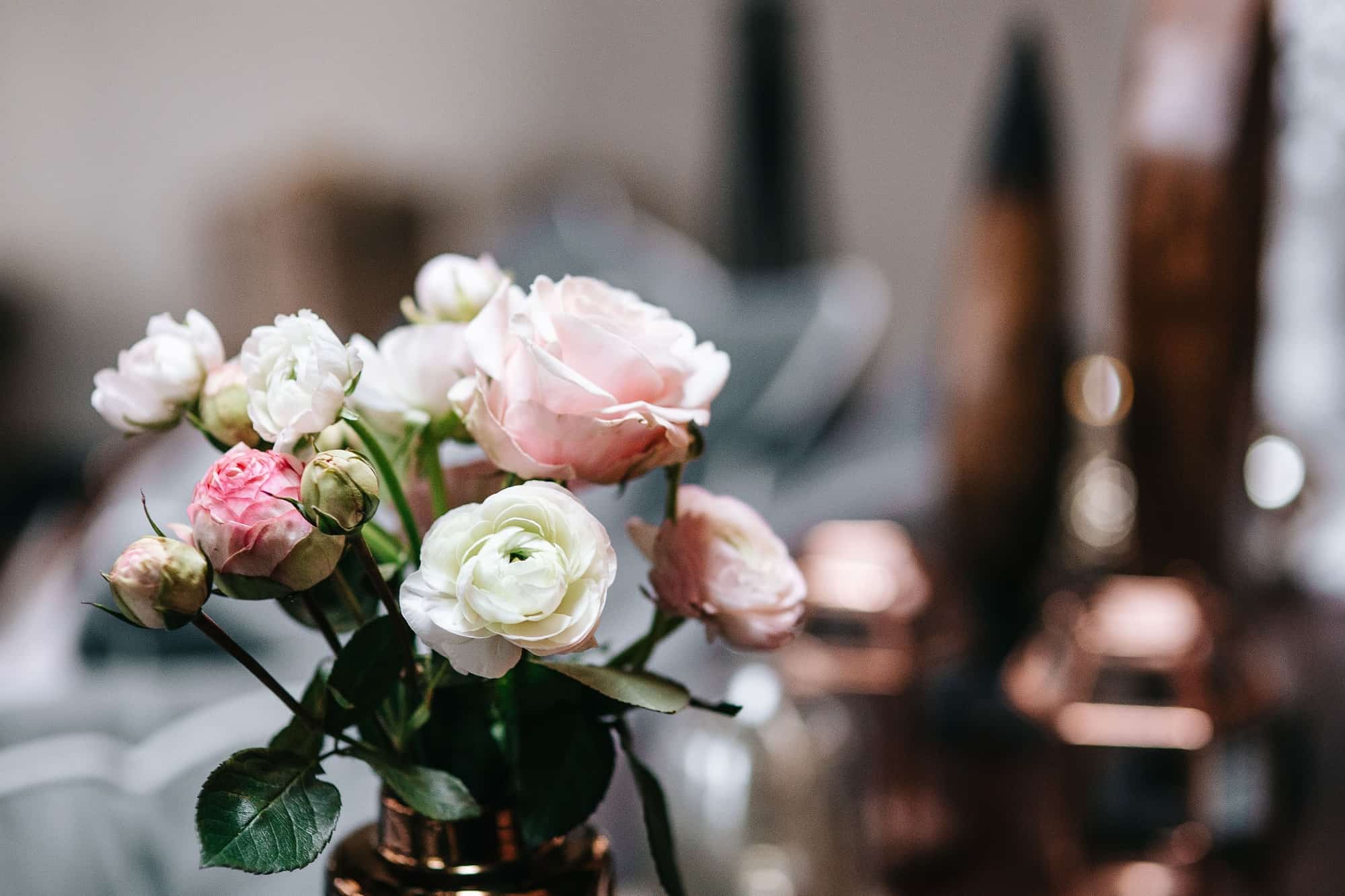There’s something magical about walking into a home that just feels right. The air is fresh, the spaces feel inviting, and everything seems to be in its proper place. Creating this kind of atmosphere doesn’t happen by accident, nor does it require a complete renovation or unlimited budget. It’s about understanding what makes a home truly comfortable and taking deliberate steps to address the elements that detract from that sense of peace.
Most of us spend significant portions of our lives within our homes, yet we often overlook the small irritations and issues that gradually diminish our enjoyment of these spaces. A room that always smells slightly off, surfaces that never quite look clean no matter how much you scrub, or persistent pests that make you feel uncomfortable in your own space. These problems feel so commonplace that we accept them as inevitable parts of homeownership. But they don’t have to be.
The truth is that transforming your home into a true sanctuary involves addressing both the visible and invisible elements that affect your daily experience. It means paying attention to ambiance, cleanliness, and the small touches that signal care and intention. When you get these fundamentals right, everything else falls into place more easily.
The Psychology of Home Comfort
Our homes affect us in profound ways that we don’t always consciously recognize. The environment we create within our walls influences our mood, productivity, stress levels, and even our relationships. When our living space feels chaotic, dirty, or unwelcoming, it creates a subtle but persistent drain on our mental energy.
Consider how you feel when you walk into a hotel room that’s been freshly cleaned and prepared. There’s an immediate sense of relief and comfort. The clean surfaces, fresh linens, and carefully arranged space signal that someone has taken care to create a pleasant environment. While we can’t maintain hotel-level perfection in our daily lives, we can certainly capture some of that feeling through thoughtful attention to our home’s condition.
The challenge most homeowners face isn’t a lack of desire to maintain beautiful spaces. It’s the combination of limited time, competing priorities, and sometimes simply not knowing the most effective approaches to common problems. We develop routines that keep things mostly under control, but we may not be addressing underlying issues that prevent our homes from truly feeling fresh and inviting.
Light plays a crucial role in how we experience our homes. Natural light lifts our spirits and makes spaces feel larger and more welcoming. But light also reveals imperfections. Those streaks on windows, the grime that accumulates on exterior surfaces, or the dullness that develops on walls over time all become more apparent in good lighting. Rather than seeing this as a negative, we can view it as useful information about where our homes need attention.
Starting With What You See Every Day
The exterior of your home creates your first impression every single time you arrive. If the outside looks tired, grimy, or neglected, that feeling follows you inside even if your interior spaces are immaculate. Over time, New Zealand’s weather conditions take their toll on exterior surfaces, creating buildup that standard cleaning methods struggle to remove effectively.
Traditional pressure washing might seem like the obvious solution for exterior cleaning, but it comes with risks. The high pressure can damage delicate surfaces, force water into places it shouldn’t go, and actually make some problems worse rather than better. Paint can chip, wood can splinter, and mortar can erode when subjected to excessive force.
There’s a better approach that delivers superior results without these risks. Professional services offering a chemical house wash Auckland providers use specialized cleaning solutions that break down organic growth, dirt, and grime at a molecular level, then rinse away cleanly without requiring damaging high pressure. This method not only cleans more thoroughly but also helps prevent regrowth, keeping your home looking fresh for longer periods.
The difference between a home that’s been properly cleaned using appropriate methods and one that’s been hastily pressure-washed becomes apparent within weeks. The chemical cleaning approach addresses the root causes of discoloration and buildup rather than just blasting away surface dirt. This means the results last longer and your home’s exterior materials stay in better condition over time.
Think about the practical benefits beyond just appearance. When your home’s exterior is properly maintained, it actually protects your investment. Organic growth can deteriorate surfaces over time, leading to expensive repairs. Regular professional cleaning prevents this degradation, ultimately saving money while keeping your property looking its best.
Creating Inviting Interior Spaces
Once your home’s exterior presents a welcoming face to the world, it’s time to turn attention to the interior atmosphere. This goes beyond basic cleanliness to encompass the overall feeling your spaces create. Temperature, air quality, lighting, and thoughtful details all contribute to whether a room feels like somewhere you want to spend time.
One of the most overlooked aspects of interior comfort is air quality. We’ve all walked into spaces that just smell wrong, even if we can’t immediately identify the source. Sometimes it’s mustiness from poor ventilation, other times it’s lingering cooking odors or the accumulated smell of daily life. These issues are so gradual that residents often become nose-blind to them, but visitors notice immediately.
Improving air quality starts with addressing sources of odors rather than just covering them up with air fresheners. Proper ventilation is essential, particularly in bathrooms, kitchens, and laundry areas where moisture and strong smells concentrate. Opening windows regularly, using exhaust fans properly, and ensuring good air circulation throughout your home makes a remarkable difference.
Plants serve double duty in creating welcoming interiors. Beyond their aesthetic contribution, many varieties actively filter air and add humidity, which can be beneficial in drier climates or during winter months when heating systems dry out indoor air. They bring life and color into spaces in ways that manufactured decorations simply cannot match.
The role of natural elements in home design has gained renewed appreciation in recent years. Fresh flowers, in particular, transform a space instantly. They add color, fragrance, and a sense of occasion to everyday life. The beauty of flowers lies not just in their appearance but in their temporality. They remind us to pause and appreciate the present moment, adding a dimension of mindfulness to our homes.
The Power of Fresh Flowers in Daily Life
There’s a reason flowers have been used to celebrate, comfort, and beautify for thousands of years across virtually every culture. They speak a language that transcends words, conveying emotions and creating atmosphere in ways that few other elements can match. Incorporating flowers into your home doesn’t have to be reserved for special occasions.
Many people hesitate to buy flowers regularly, viewing them as an unnecessary luxury. But when you consider the psychological impact of having beautiful, living elements in your space, the value becomes clearer. Studies have shown that flowers reduce stress, improve mood, and even increase productivity and creativity. For the cost of a few coffees, you can bring that benefit into your home for a week or more.
The key is finding a reliable source that offers quality, variety, and service that makes the experience enjoyable rather than stressful. Floristique provides an excellent example of how modern florists combine traditional artistry with contemporary convenience, offering carefully curated arrangements that suit various preferences and occasions. Having access to quality flowers transforms them from a rare treat to a regular part of maintaining a beautiful home environment.
Seasonal flowers connect us to the natural cycles of the year in ways that are increasingly rare in our climate-controlled, always-available modern world. Spring bulbs in March, summer roses in December (for those of us in the Southern Hemisphere), autumn dahlias, and winter greenery each bring their own character and remind us that our homes exist within a larger natural context.
Different rooms benefit from different floral approaches. A dramatic statement arrangement works beautifully in an entryway, creating an immediate impression. Smaller, simpler displays suit bedside tables or bathroom counters, adding touches of beauty to private spaces. Kitchen flowers should be chosen for durability and pleasant scents that complement rather than compete with cooking aromas.
The ritual of caring for flowers offers its own benefits. Trimming stems, changing water, and removing spent blooms creates small moments of mindfulness in busy days. These simple tasks provide brief breaks from screen time and mental chatter, grounding us in physical, sensory experiences that restore perspective.
Dealing With Unwelcome Visitors
No matter how clean and beautiful you make your home, there’s one category of problem that can undermine all your efforts: pests. Few things are more distressing than discovering you’re sharing your space with insects or other unwanted creatures. The presence of pests doesn’t reflect on your housekeeping. Even immaculate homes can attract various insects depending on location, season, and circumstances beyond your control.
Flies represent one of the most common and frustrating pest issues homeowners face. Unlike pests that hide in walls or under floors, flies are visible and active, making their presence impossible to ignore. They land on food, spread bacteria, and create an atmosphere of uncleanliness no matter how much effort you’ve put into maintaining your home.
The standard response to fly problems typically involves fly paper, electric zappers, or spray insecticides. These solutions offer limited, temporary relief at best. They address individual flies but don’t solve the underlying problem that’s attracting them to your home in the first place. Within days or even hours, new flies appear, and the cycle continues.
Effective fly control requires a more comprehensive approach. Professional pest management services understand fly biology and behavior, allowing them to identify breeding sites, entry points, and attractants that homeowners typically miss. Rather than just killing visible flies, they address the conditions that allow fly populations to establish and thrive.
For homeowners dealing with persistent fly issues, investing in professional treatment for house situations delivers results that DIY approaches simply cannot match. Professionals use a combination of methods tailored to your specific situation, including identifying and eliminating breeding sites, sealing entry points, and applying targeted treatments that break the reproduction cycle.
The peace of mind that comes from knowing your pest problems are being handled by experts cannot be overstated. Instead of constantly swatting flies and worrying about what guests will think, you can simply enjoy your space. This mental relief is worth far more than the cost of professional service, particularly when you consider the time and money wasted on ineffective DIY solutions.
Beyond flies, maintaining a pest-free home involves some preventive thinking. Proper food storage, regular cleaning of areas where crumbs accumulate, and managing moisture all reduce the factors that attract various pests. But even with excellent prevention, professional intervention is sometimes necessary, and there’s no shame in recognizing when a problem requires expert help.
The Connection Between Maintenance and Enjoyment
There’s an interesting relationship between how well we maintain our homes and how much we enjoy living in them. Neglect breeds more neglect. When we allow problems to accumulate, the list of things needing attention becomes overwhelming, and we retreat into a mindset of just coping rather than creating the environment we truly want.
Conversely, when we address issues promptly and maintain high standards, the work becomes easier. A home that’s consistently well-kept requires less effort to maintain than one that’s been let go. This isn’t just about physical cleanliness but about the systems and habits that keep problems from developing in the first place.
Regular professional maintenance for things you can’t effectively do yourself isn’t an admission of failure. It’s a recognition that specialized knowledge and equipment deliver results that DIY efforts cannot match. Just as you wouldn’t hesitate to hire an electrician for electrical work or a plumber for serious plumbing issues, bringing in experts for exterior cleaning or pest control makes practical and economic sense.
The money spent on professional services should be viewed as an investment in your home’s condition and your own quality of life rather than an expense. When you calculate the cost of your time, the inferior results of amateur efforts, and the potential damage from improper techniques, professional services often represent the more economical choice, even before considering the superior outcomes.
Small Touches That Create Big Impact
Beyond addressing major maintenance issues, it’s the small, thoughtful touches that truly make a house feel like a home. These are the details that show care and intention, creating an environment that nurtures and supports the people who live there.
Texture plays an important role in creating comfortable spaces. Soft throws on sofas, plush rugs underfoot, quality linens on beds. These tactile elements engage our senses in ways that purely visual decoration cannot. They invite us to relax and settle in, signaling that this is a space designed for comfort and human use, not just for looking at.
Lighting deserves more attention than it typically receives. Harsh overhead lighting makes spaces feel institutional and unwelcoming. Layered lighting, combining ambient, task, and accent sources, allows you to adjust the mood of a room for different activities and times of day. The warm glow of table lamps in the evening creates an entirely different atmosphere than bright ceiling lights, making the same space feel more intimate and relaxing.
Personal items and collections tell your story and make your space distinctly yours. Family photos, travel souvenirs, books, artwork. These elements shouldn’t be relegated to storage because they don’t fit a particular aesthetic. The most beautiful homes are those that reflect the personalities and experiences of the people who live there, creating spaces with soul and character rather than looking like showrooms.
Scent creates powerful associations and affects mood in ways we don’t fully consciously process. Beyond addressing bad odors, consider what fragrances you want to introduce. Fresh flowers provide natural scent, but you might also use candles, essential oils, or simply the smell of fresh air through open windows. The goal is subtle background ambiance, not overwhelming fragrance that announces itself from every corner.
Seasonal Transitions and Home Care
As seasons change, our homes need different kinds of attention. Spring invites deep cleaning and opening windows after winter’s closed-up months. Summer demands attention to outdoor spaces and managing heat and light. Autumn calls for preparation before winter weather arrives, and winter itself requires different maintenance considerations.
Rather than viewing seasonal home care as a chore, it can become a ritual that marks the passing of time and keeps you connected to natural cycles. Spring cleaning isn’t just about removing winter’s grime. It’s about renewal and fresh starts. Preparing your home for winter isn’t just practical. It’s about creating a cozy refuge from harsh weather.
These seasonal transitions offer perfect opportunities for the professional services we’ve discussed. Spring is an ideal time for exterior cleaning, removing winter’s accumulated grime before summer’s entertaining season. Autumn pest control prevents winter invaders from finding their way inside as temperatures drop. Coordinating professional maintenance with seasonal rhythms creates a predictable schedule that keeps your home in top condition year-round.
Building Sustainable Home Care Habits
The difference between homes that always seem to be in great shape and those that constantly need attention often comes down to habits rather than extraordinary effort. Small, consistent actions prevent the buildup of problems that require major interventions to fix.
A few minutes of daily attention to high-traffic areas keeps them from requiring hours of deep cleaning later. Immediately addressing small issues before they become big problems saves time and money. Maintaining regular schedules for professional services ensures that problems don’t have time to develop between visits.
The mental load of home maintenance deserves recognition. It’s not just about the time spent cleaning or organizing. It’s about the constant background processing of what needs to be done, what you’re putting off, and what you’re worried about forgetting. Developing systems and routines reduces this cognitive burden, freeing up mental energy for things you actually enjoy.
Technology can support better home care habits. Calendar reminders for seasonal tasks, apps that track when various maintenance tasks were last completed, or even just a simple checklist on your phone can prevent important tasks from slipping through the cracks. The goal isn’t rigid adherence to schedules but having systems that work with your lifestyle and ensure nothing gets forgotten until it becomes a crisis.
The Return on Investment in Your Home
When you invest time, effort, and money into maintaining and beautifying your home, you’re not just preserving property value, though that’s certainly part of it. You’re investing in your daily quality of life and the environment where you spend your most important hours.
Calculate the hours you spend at home over a year. Now consider whether the relatively small investments in professional cleaning, pest control, or fresh flowers seem unreasonable when divided by those hours. The cost per hour of enjoyment is remarkably low, especially when compared to entertainment or dining out.
Beyond pure economics, there’s the intangible value of pride in your space. When your home looks good and feels comfortable, you’re more likely to invite people over, strengthening social connections. You’re more productive in a pleasant environment. You sleep better in a clean, comfortable bedroom. These benefits ripple through all aspects of life.
Your home should be a source of peace and restoration, not stress and embarrassment. Every element we’ve discussed contributes to creating that sanctuary feeling. Clean exteriors, fresh interiors, beautiful natural elements, freedom from pests. Together, they transform a house into the kind of home where you can truly relax and be yourself.
The journey to creating your ideal home environment doesn’t happen overnight. It’s a process of gradually addressing issues, establishing better systems, and making thoughtful choices about what deserves your attention and resources. But each step forward makes a difference, and the cumulative effect of these improvements creates a home that genuinely supports and nurtures you.
Start with whatever feels most urgent or accessible. Maybe it’s finally addressing that exterior cleaning you’ve been putting off. Perhaps it’s bringing fresh flowers into your space more regularly. Or it could be solving a pest problem that’s been bothering you for months. Whatever you choose, that first step sets everything else in motion, creating momentum toward the home environment you’ve been imagining.
Little things can upgrade the quality of your daily life.
Snag a free workbook and get inspiration on all the ways to love your life even more.
>>Click Here to Discover Additional Articles on How to Fall in Love with Yourself and Your Life <<









